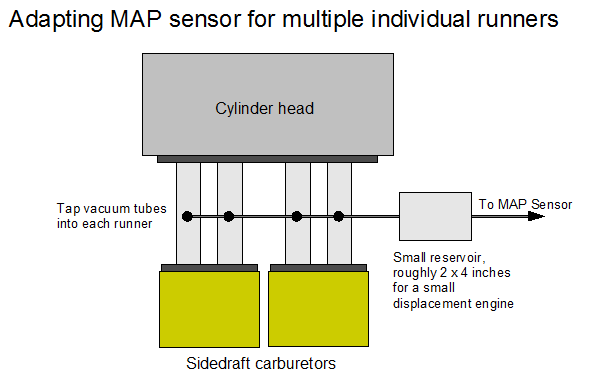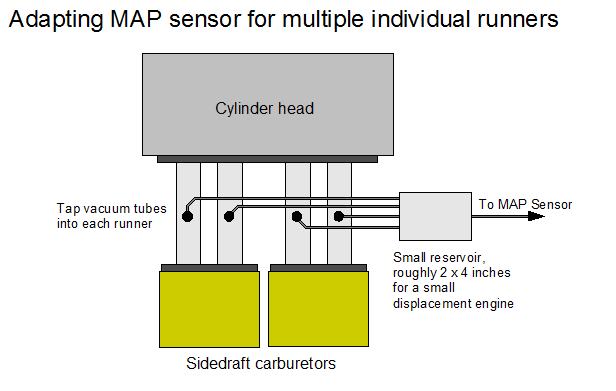Choosing between MAP or TPS: Difference between revisions
(→MAP Sensor: added image for map sensor adaptation for multiple runners) |
(→MAP Sensor: added extra map sensor balance tube arrangement) |
||
| Line 13: | Line 13: | ||
<center> | <center> | ||
[[Image:Adapting map sensor for multiple runners.png]] | [[Image:Adapting map sensor for multiple runners.png]] | ||
<br>''One approach to reference pressure across the manifold runner'' | |||
</center> | |||
<center> | |||
[[Image:Adapting_map_sensor_for_multiple_runners_balanced_tubes.png]] | |||
<br>''Alternate arrangement of balance tubes'' | |||
</center> | </center> | ||
Revision as of 14:24, 19 October 2007
MAP vs. TPS
The MJLJ offers two different mechanisms for measuring engine load. See the guide below for determining which is best for your engine.
MAP Sensor
A MAP sensor determines engine load by measuring manifold pressure (or vacuum).
It is typically considered more accurate because it directly measures how the engine is 'breathing' and automatically adjusts for varying conditions (altitude, temperature, humidity) and modifications to the engine which affects it's volumetric efficiency.
The MAP sensor requires a stable source of manifold pressure across all cylinders. If you have multiple runners, like a multiple sidedraft configuration, you will need a balance tube with a miniature 'plenum', or accumulator, to smooth the pressure reading across all cylinders.

One approach to reference pressure across the manifold runner
Throttle Position Sensor (TPS)
A Throttle Position Sensor measures the angle of the throttle plate, which can be used to infer engine load. Use this configuration if you have very aggressive cams and a manifold pressure reading is unstable, especially at idle. The sensor will need to be adapted to the throttle linkage and then wired to the MJLJ.

